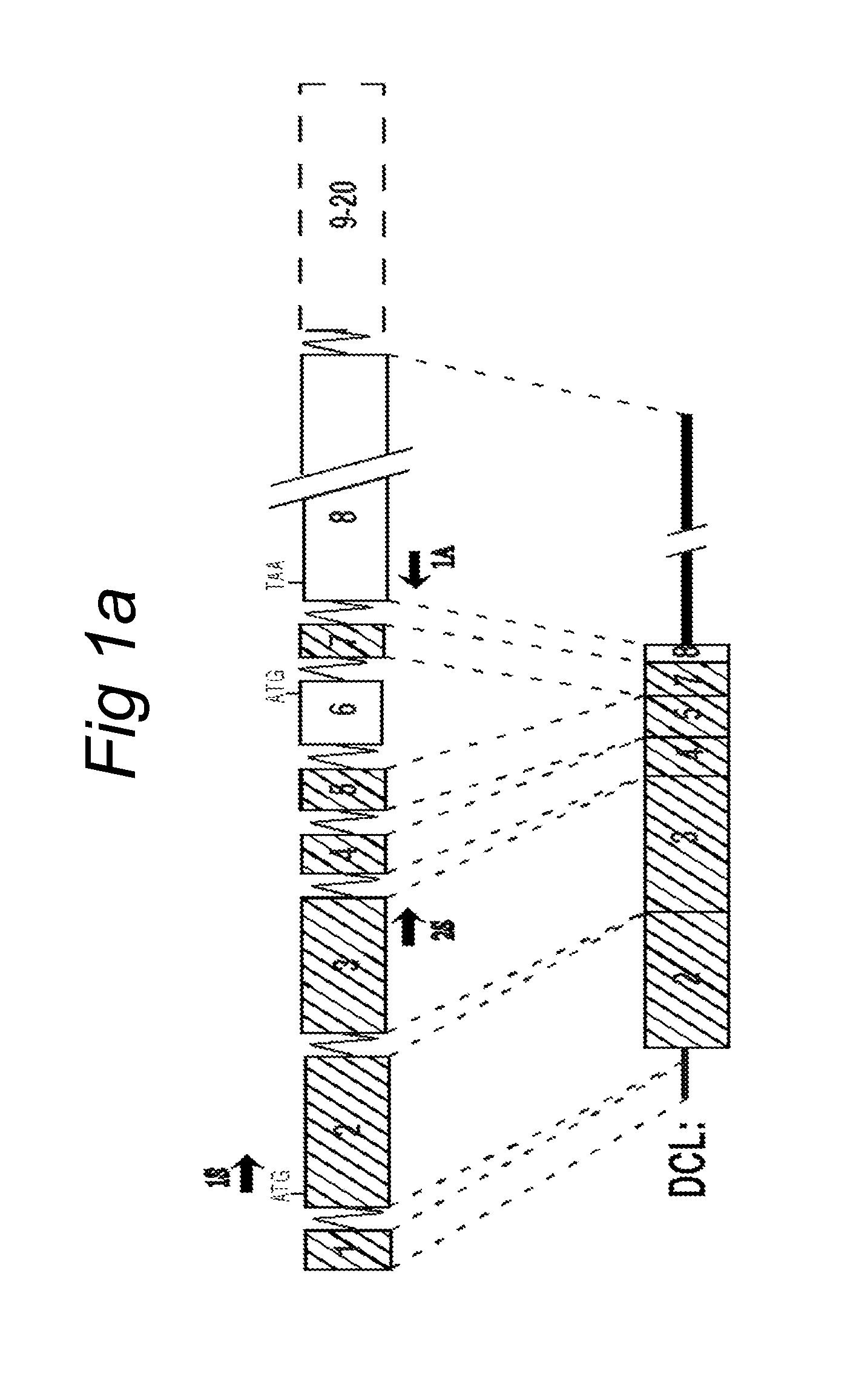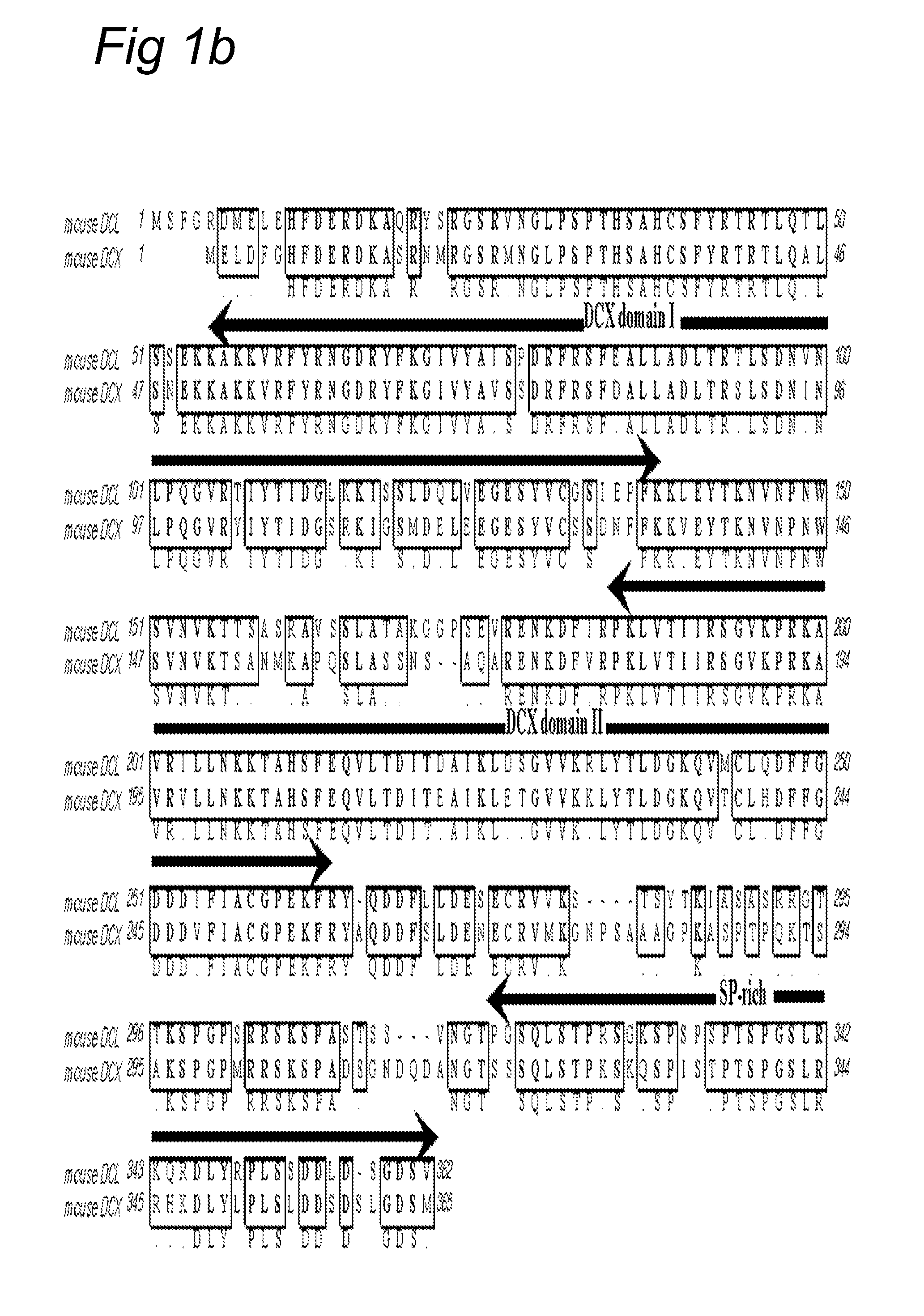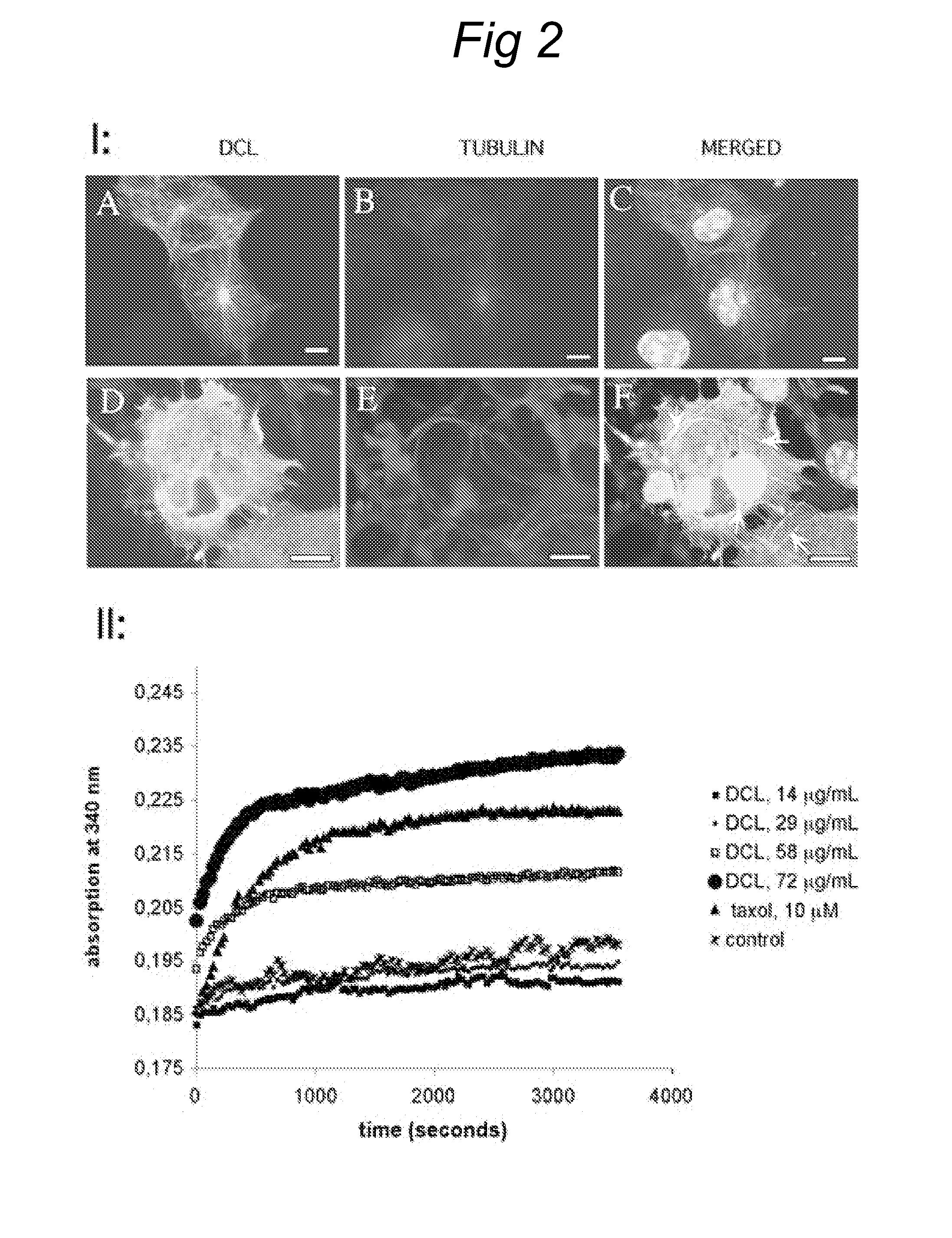NOVEL mRNA SPLICE VARIANT OF THE DOUBLECORTIN-LIKE KINASE GENE AND ITS USE IN DIAGNOSIS AND THERAPY OF CANCERS OF NEUROECTODERMAL ORIGIN
a kinase gene and mrna technology, applied in the field of new doublecortin-like protein (dcl) and a novel mrna splice variant, can solve the problems of rare complete eradication of neuroblastoma cells and patients' relaps
- Summary
- Abstract
- Description
- Claims
- Application Information
AI Technical Summary
Benefits of technology
Problems solved by technology
Method used
Image
Examples
example 1
Cloning of DCL from Mouse and Human
[0098]DNA sequence analysis of a DCL cDNA clone from mouse (SEQ ID NO: 1) revealed an open reading frame of 362 amino acids (SEQ ID NO: 3) with a predicted molecular mass of 40 kDa (FIG. 1B) and 73% amino acid identity (81% similarity) with mouse DCX over the entire length of both proteins. Alignment of the two predicted DCX repeats (Taylor et al., 2000, supra) with mouse DCX revealed an even higher amino acid identity of 81% (89% similarity) for DCX domain 1 and 90% amino acid identity (99% similarity) for DCX domain II, strongly suggesting that this latter domain has a similar function in both proteins. The serine / proline (SP)-rich C-terminus, which corresponds largely with CARP (Vreugdenhil et al., 1999, Neurobiology 39, 41-50), exhibits a lower amino acid identity of 63% (78% similarity). This SP-rich domain is present in both DCX and DCL. Such SP-rich domains are potential MAP kinase motifs (Sturgill et al., 1988, Nature 334, 715-718), suggest...
example 2
DCL is a MAP (Microtubule Associated Protein) and Stabilizes the Cytoskeleton
[0100]The two DCX domains of both DCX and DCLK-long have been shown to interact with and to stabilize microtubule structures (Francis et al., 1999, supra; Gleeson et al., 1999 supra; Kim et al., 2003, Struct. Biol. 10, 324-333; Lin et al., 2000, supra). As DCL contains DCX domains that are identical to DCLK-long, a similar stabilizing and polymerizing effect on microtubules was expected for DCL. To confirm this, three types of experiments were conducted: first, overexpression of DCL in COS-1 cells resulted in a fibrillar staining pattern in the soma overlapping the microtubule distribution (FIG. 2.I A), as shown by co-localization with α-tubulin antibodies (FIGS. 2.I B and C). Second, to test if DCL-containing microtubule bundles exhibit a similar resistance to depolymerization as is known for DCX and other MAPs, DCL transfected cells were exposed to 10 μg colchicine, a compound which depolymerizes and disr...
example 3
Characterization of a DCL Recognizing Antibody
[0101]Recently the generation of an antibody against CARP, called anti-CaMKLK, has been described (Kruidering et al., 2001, supra) which also recognizes other splice-variants of the DCLK gene including DCLK-short (also known as cpg16 (Silverman et al., 1999, J. Biol. Chem. 274, 2631-2636) or CaMLK). CARP is a small protein of 55 amino acids of which 43 are identical with the C-terminus of DCL, that shares 70% amino acid homology with human DCX (Vreugdenhil et al., 1999). To address the specificity of anti-CaMLK, DCX and DCL were overexpressed in COS-1 cells and analysed for possible cross-reactivity by Western Blot analysis. Anti-CaMLK strongly recognized DCL (FIG. 3A lane 4-6) whereas only some cross-reactivity was observed with DCX (FIG. 3A lane 2 and 3). On the other hand, the DCX antibody used herein, raised against the C-terminal 17 amino acid of DCX, strongly recognized DCX (FIG. 3A lane 2 and 3) and not DCL (FIG. 3A lane 4-6). Thu...
PUM
 Login to View More
Login to View More Abstract
Description
Claims
Application Information
 Login to View More
Login to View More - R&D
- Intellectual Property
- Life Sciences
- Materials
- Tech Scout
- Unparalleled Data Quality
- Higher Quality Content
- 60% Fewer Hallucinations
Browse by: Latest US Patents, China's latest patents, Technical Efficacy Thesaurus, Application Domain, Technology Topic, Popular Technical Reports.
© 2025 PatSnap. All rights reserved.Legal|Privacy policy|Modern Slavery Act Transparency Statement|Sitemap|About US| Contact US: help@patsnap.com



